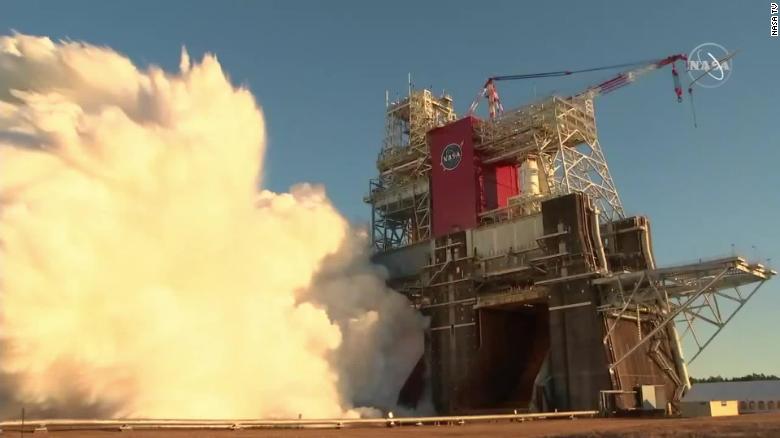NASA’s Space Launch System rocket ignited its four main engines Saturday on a test stand in Mississippi, but the space agency prematurely ended the test.
The hot fire test was the eighth and final test of a series aimed at ensuring the rocket is prepared to launch missions to the moon. The rocket is the most powerful launch vehicle the space agency has ever constructed.
The SLS was supposed to light its engines for about eight minutes, the length of time the engines will have to fire to propel the rocket on its orbital missions.
It’s not yet clear why the engines powered down after little more than a minute. The test was still useful for gathering data and “teams are assessing the data on early engine shutdown,” the space agency tweeted.
During the hot fire test, engineers “power up all the core stage systems, load more than 700,000 gallons of cryogenic, or supercold, propellant into the tanks and fire all four engines at the same time,” according to NASA.
NASA may need to repeat the test fire before the rocket is shipped to Florida, the launch site where the SLS rocket is expected to make its first journey into outer space.
Yet another delay
SLS has been haunted by critiques of long delays and cost overruns, and with the premature end of the critical hot fire test, its launch may be delayed once again. Boeing was contracted in 2012 to build SLS’s main components, and the rocket was originally expected to start flying in December 2017.
The rocket is a key part of NASA’s Artemis lunar exploration program, which aims to send the first woman and next man to the moon by 2024. NASA officials also hope the SLS will be used to reach Mars and other “deep space destinations.”
The SLS rocket stands taller than the Statue of Liberty and has about 15% more thrust at liftoff than the Saturn V rockets that powered the Apollo missions about 50 years ago.
NASA’s Artemis I mission, expected to launch by the end of 2021, with two test flights around the moon without astronauts.
A crewed test mission, Artemis II, is set to launch in 2023 in preparation to have the Artemis III mission return astronauts to the surface of the moon in 2024 for the first time since the 1970s.
Artemis is named after the Greek goddess of the moon and is the twin sister of Apollo, which was name NASA used for the missions and spacecraft that first took Americans to the moon in 1969.
>>>>
